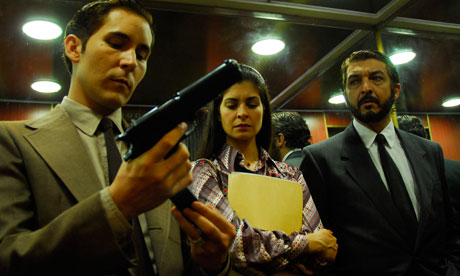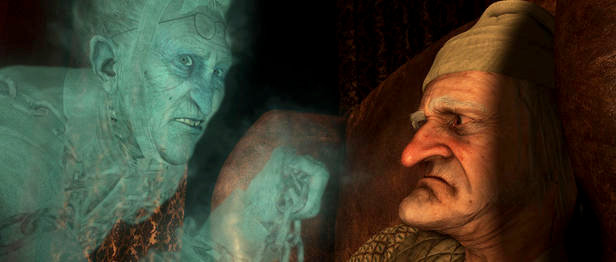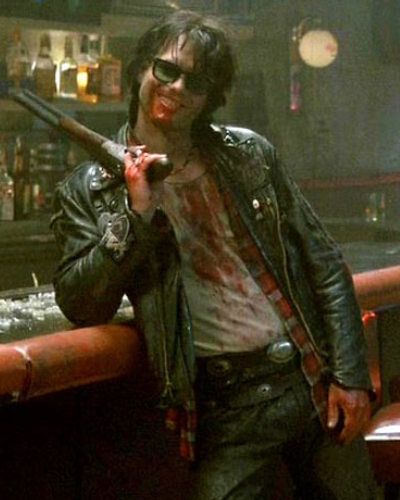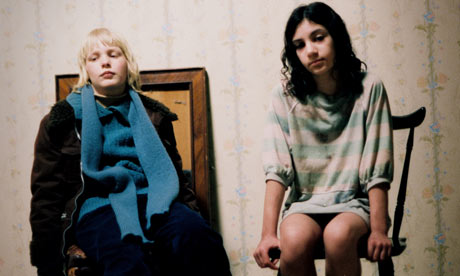
One of the difficulties of being a young artist is that, while your technique is growing and developing rapidly, you are short on original subjects to address. Most young artists haven't lived long enough to have remarkable experiences or insight. This is probably one of the main reasons that early works are derivative, whether being pastiches of, mash-ups or commentary on the work of other artists. In a way, that's just what Citizen Kane is, a fantasia on the genre of newspaper movies and biopics with a flavoring of German expressionism and Gregg Toland Wizardry sprinkled on top. The only other route is to focus on one's own experience, circle of friends and family to an extent and with a level of detail far beyond what is commonly done -- to put life under a microscope to see what turns up.
The Duplass brothers have made a style out of no style, first making their mark with this short, reportedly made with materials and time left over from a larger project:
But of course, there is a style at work here. There is close observation of both the use of language and the obsession with presentation of self. These are both on display in the very warm and funny feature The Puffy Chair (2005). Ordinarily discussion of this film is framed by the so-called "mumblecore" movement, which seems to me no more than ultra lowbudget filmmaking, which, given the personnel, materials and equipment available without money, focuses on close personal and family relationships as revealed in naturalistic dialogue sequences. Really, this is no different than the original American independent film movement as pioneered by the Cassavetes generation. Mumblecore's status as a distinct genre is more a testament to film reviewer's ignorance of the history of the medium than to any real innovation.
But not being innovative does not negate the value of the work; rather it clears away the clutter of superficial considerations of style to the actual piece itself. The Puffy Chair discards the cliche jokes of "my-parent-as-controlling-monsters" or "my-parents-as-culturally-clueless-idiots" or "my-parents-as-deranged-narcissists" (so egregiously on display in the horrid Four Christmases). Josh really wants to get his father a nice present, and is willing to uproot his life, taking an ill-advised road trip to secure this gift. Moreover, the gift is not as advertised, and a great deal of effort and machinations will be necessary to realize Josh's dream of bliss for his pop. I'm not spoiling anything important to say that, happily, Josh comes to realize (via the agency of his dissolute brother Rhett) that this was all his own projection, and had nothing to do with really making his father happy.
The Duplasses and their friends are only adequate improvisers -- you will never get any of the brilliant mots of the typical Christopher Guest movie. Their real strength is as editors. Rarely is a scene stretched past its real value, and judging from the cut scenes on the DVD, they are ruthless about discarding material that does not land or does not contribute. One can't help wishing they would develop more craft in creating and performing material so that they would not have to go down so many blind alleys, but whatever the process, the result is balanced and well-judged. Their best effects are scenes played against people or things which do not change, despite the pleas and cajoling. The hysterical scene pictured above has Josh issuing ultimatums to an implacably closed door, without any evidence of a human behind it.
And The Puffy Chair should go down in film history for having the best, most logical, dramatically right, heartbreaking and perfectly played break-up scene ever. Instead of dramatics, screaming and psychobabble, there is the sincere mutual acknowledgment that these two people do not really share a future. And then there is a tearful embrace, a moment of mourning for a relationship that should have been, but which could not be brought back to life despite heroic measures. It is so beautiful and sweet, that you have to like both members of the now-sundered couple.
This scene comes shortly after a very simple and true father-and-son exchange about how one knows whether a woman is "the woman." (I must acknowledge that I have now been on both sides of that conversation, so it touches a tender place with me.) The cliche would have been to go on to a fumbling but sincere engagement scene. Instead, the film goes in the direct opposite direction and makes us love it, in a way that is original and satisfying.

And despite his denials, Bobby Dupea, as played by Jack Nicholson in Five Easy Pieces (1970) is also eager to please his father, but unwilling to alter his own path to do so. I don't like to make these blogs too personal, but this film came out when I was a teenager trying to understand adult culture, including books and films, and I was puzzled by the praise for what seemed to me a flat and meandering film, the most famous scene of which, the famous "chicken salad" scene, was completely irrelevant to the film.
For all the originality in conception, the film never establishes a point of view about its protagonist and his choices. It is hard enough for most of us to relate to a guy working an oil rig, and finding out that his family are all pretentious classical musicians doesn't bring him any closer to us. Bobby seems to have escaped from one distant planet to another, and if the alien question wants to be rude, sleep with his sister-in-law or throw a temper tantrum, who cares?
This film was the beginning of Jack Nicholson's Legend as a Great Actor. This has always been mysterious to me. He's occasionally amusing as an eccentric, and he can do regret as in the very fine film The Promise. But his range his narrow and his style is self-regarding and narcissistic. He is the Barbara Streisand of acting: Every Nicholson Performance is about Nicholson Performing. Fooey.
Long story short, the film isn't any more insightful or dramatic to me than it was in 1970. True, it earns some points for avoiding then-contemporary cliches in dramaturgy, borne of theatrical tradition. It boasts greater realism in acting, and a naturalistic shape to the scenes. (The final sequence, in which Bobby disappears into oblivion, feels particularly right.) But it still doesn't say very much about people who are so odd that it is impossible to either feel for them or connect them to our lives. Reviewers describe it as "moody" "thoughtful" and a "study in inner pain" or "fear of the past." So the film is a detailed study of something no well-adjusted person would care about. About as interesting as a highly detailed description of a turd. There are professionals who study such things, but the rest of us can skip it.



















